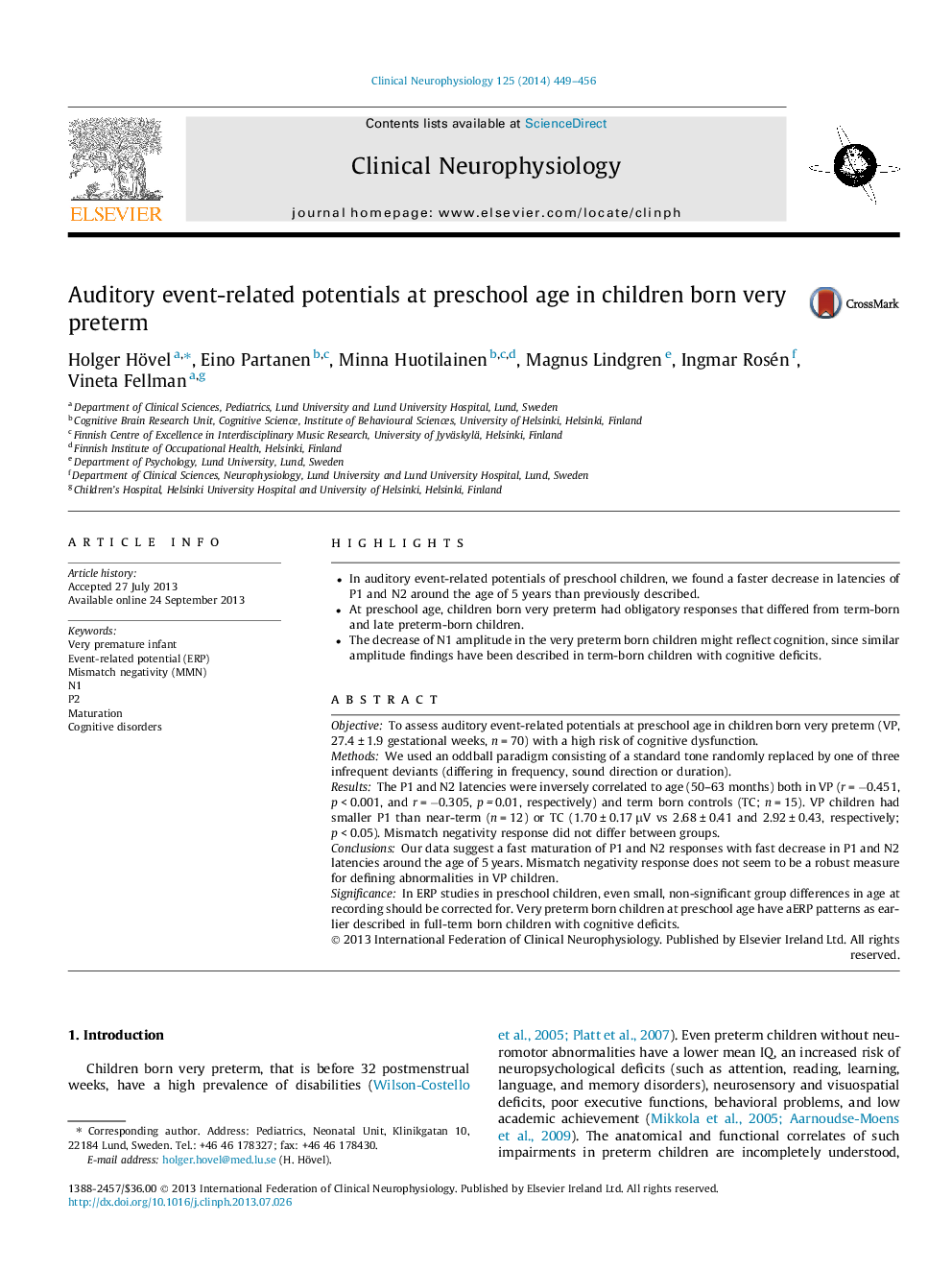| Article ID | Journal | Published Year | Pages | File Type |
|---|---|---|---|---|
| 3043933 | Clinical Neurophysiology | 2014 | 8 Pages |
•In auditory event-related potentials of preschool children, we found a faster decrease in latencies of P1 and N2 around the age of 5 years than previously described.•At preschool age, children born very preterm had obligatory responses that differed from term-born and late preterm-born children.•The decrease of N1 amplitude in the very preterm born children might reflect cognition, since similar amplitude findings have been described in term-born children with cognitive deficits.
ObjectiveTo assess auditory event-related potentials at preschool age in children born very preterm (VP, 27.4 ± 1.9 gestational weeks, n = 70) with a high risk of cognitive dysfunction.MethodsWe used an oddball paradigm consisting of a standard tone randomly replaced by one of three infrequent deviants (differing in frequency, sound direction or duration).ResultsThe P1 and N2 latencies were inversely correlated to age (50–63 months) both in VP (r = −0.451, p < 0.001, and r = −0.305, p = 0.01, respectively) and term born controls (TC; n = 15). VP children had smaller P1 than near-term (n = 12) or TC (1.70 ± 0.17 μV vs 2.68 ± 0.41 and 2.92 ± 0.43, respectively; p < 0.05). Mismatch negativity response did not differ between groups.ConclusionsOur data suggest a fast maturation of P1 and N2 responses with fast decrease in P1 and N2 latencies around the age of 5 years. Mismatch negativity response does not seem to be a robust measure for defining abnormalities in VP children.SignificanceIn ERP studies in preschool children, even small, non-significant group differences in age at recording should be corrected for. Very preterm born children at preschool age have aERP patterns as earlier described in full-term born children with cognitive deficits.
